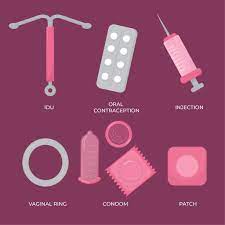
Choosing the right contraception method is a highly personal decision that depends on individual preferences, lifestyle, and health considerations. There are several birth control methods available, each with its own effectiveness, advantages, and disadvantages.
Condoms: Male and female condoms are readily available over the counter. They provide protection against both pregnancy and sexually transmitted infections (STIs). Effectiveness varies but is generally high with correct and consistent use.
Diaphragm and Cervical Cap: These are barrier methods that require a healthcare provider’s prescription. They are inserted into the vagina before intercourse and provide protection against pregnancy. Effectiveness can vary and depends on proper use.
Emergency contraception pills (e.g., Plan B) can be taken after unprotected sex to reduce the risk of pregnancy. They should be taken as soon as possible after unprotected intercourse.
These methods involve tracking your menstrual cycle and avoiding intercourse on fertile days. They include methods like the calendar method, basal body temperature method, and cervical mucus method. Effectiveness varies and requires careful tracking and consistency.
Also known as “pulling out,” this method involves the male partner withdrawing the penis before ejaculation. It’s less effective than many other methods and does not protect against STIs.
Some methods are more effective than others. Discuss your preferences and priorities with your healthcare provider to find the best fit.
Your overall health, medical history, and any underlying health conditions can influence which method is suitable for you.
Consider your lifestyle, relationship status, and whether you want to have children in the future.
If STI protection is a concern, choose a method, such as condoms or barrier methods, that provides dual protection.
Decide whether you prefer a method that provides long-term or short-term contraception.
Some methods require daily or frequent use, while others are more convenient but may require periodic replacement or healthcare provider visits.
Consider the cost of the method and whether it’s covered by your insurance.
It’s crucial to consult with a healthcare provider to discuss your options, receive proper guidance, and choose the contraception method that aligns with your needs and preferences. Keep in mind that using dual protection (e.g., condoms along with another contraceptive method) can provide added safety, especially when it comes to preventing STIs.
WhatsApp us